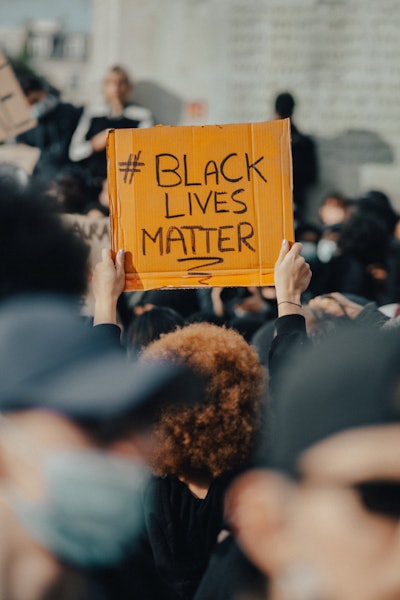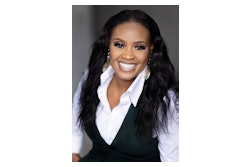In the summer of 2020, many institutions followed the lead of corporations and politicians across the country in espousing a greater commitment to pursuing and achieving racial equity. Many institutions created scholarships named for George Floyd, whose killing by Minneapolis police in May of 2020 sparked a movement for equity that touched every corner of the globe. Others moved to take down statues and memorials to known racists. The University of Minnesota moved swiftly to end its contract with the Minneapolis Police Department two days after Floyd’s death. And many other institutions convened task forces and launched campus climate surveys to investigate the state of affairs for Black students on campus.
 Photo by Thomas de LUZE on Unsplash
Photo by Thomas de LUZE on Unsplash
Dr. Tamara Stevenson, chief diversity officer and vice president of diversity, equity and inclusion at Westminster College in Salt Lake City, Utah, says her overall sense is that some institutions have taken an opportunity to “capitalize on the moment and generate good PR” by espousing a commitment to showing Black lives matter on campus.
“Race is certainly a guiding principle” for students and donors, Stevenson says, who adds the commitment is “not so much” visible operationally. “Students want to attend institutions that are responsive, and not only reactive to issues of diversity. … It also attracts and retains donors and lucrative partnerships,” she says. But when it comes to showing and proving, there hasn’t been a noticeable increase in Black faculty hiring or Black student outcomes across the country.
“Higher ed as a whole, I think, is painfully more aware of the racialized inequities that exist in American colleges and universities, not only in our student enrollments, but in our faculty ranks. Hundreds of years later, the academy is still robustly White and male, and even though there have been efforts over the years, some institution-specific, that needle hasn’t moved very much,” Stevenson says. “I think the circumstances in June 2020 just exacerbated these inequities to the point where higher ed cannot deny these inequities, cannot deny the racial hostility of this country and how it impacts students.”
Some are a bit more optimistic, offering that the impacts of COVID-19 and the challenges of distance learning may have impeded genuine desires to move the needle.
“It’s early, in terms of us looking at progress,” says Dr. Clyde Wilson Pickett, vice chancellor for equity, diversity, and inclusion at the University of Pittsburgh. Pickett — who was hired in July 2020 and immediately changed the name of the office he runs from the Office of Diversity and Inclusion to the Office for Equity, Diversity, and Inclusion — is an example of what he sees as a trend of universities showing their commitment by hiring additional senior diversity officers.
“We have to be reminded that hiring those [chief diversity officers] is just one part of this,” says Pickett, who also serves as the second vice president of the National Association of Diversity Officers in Higher Education (NADOHE) and chair of the NADOHE’s antiracism task force. “This is absolutely about completion, success and how to track that. This is about being mindful about a sense of belonging [for Black students on campus]. … We’re close to being two years removed from this, so we should see some progress in how we’re tracking it. But let’s be clear: the data has to be ongoing and consistent with regards to progress. We didn’t get ourselves into this situation in two years. This has been centuries of challenges of equity around confronting racism and aspiring to be antiracist organizations, so we’ve got a lot of work to do.”
COVID effects
Pickett says the pandemic has also impacted progress. A lot of the work to be done in advancing belonging on campus has been disrupted because many campus communities have been remote for at least some of the time.
“One of the things that we’ve talked about, in terms of access and belonging, is we have to also check that in a virtual context,” he says. “We know that, historically speaking, there has been disproportionate access to technology in communities of color,” and so one issue is making sure students can still access their courses after enrolling.
As the Omicron variant surges across the country, many institutions are again making difficult decisions about bringing students, faculty and staff back, and everyone is battling COVID fatigue.
Dr. Lesley-Anne Pittard is an assistant vice president in the Office of Diversity and Inclusion at the University of Oregon and says she’s heard from a number of people that they’re overwhelmed with the number of problems that need to be solved concurrently.
 Dr. Tamara Stevenson
Dr. Tamara Stevenson
The COVID-19 pandemic helped shine a further light on the inequities that exist in higher ed and elsewhere, says Stevenson.
“I think this new presidential administration [brought] so much relief and hope around it, not only to mitigate the effects of the severity of the pandemic, but also to say, ‘looks like we have some insightful people in this country’s leadership who are willing to listen, and to examine and engage the pervasive inequity of higher ed, and to figure out how to expand access for prospective students who might not even consider going to college,” she says. “There was some optimism that there would be some forward movement. I don’t think anyone expected change overnight, but I think there was some good will and good faith that there was going to be some forward movement.”
Pittard points out that the murder of George Floyd happened very publicly “at a time when we were all at home.” People were paying attention, perhaps because the disruption of the COVID-19 pandemic took away their normal means of distraction and the ways those who were not inclined to listen might usually be able to look away.
“There’s for some a sense of progress and hope [stemming from all of the additional attention paid to equity since June 2020], and for others, you go back to work. I don't know if they understand why it matters,” she says. “People want to say, ‘I paid attention. I got a sticker, I went to the march. I cared about diversity and equity on this designated day for me to care about it.’”
Change comes slowly
The real show of commitment is in the numbers, scholars say. Not only in students’ increased retention and graduation rates and sense of belonging, but in faculty hiring and treatment of Black faculty and staff once they are hired.
Stevenson believes much of the push to do something about equity issues on campus has come thanks to student activism – such was the case at the University of Minnesota, where the university’s first Black student president pushed administration to sever ties with the Minneapolis Police Department. Even in many places, the decision to hire more Black faculty members has been a result of pressure applied by the students.
But she also believes increased attention on what she refers to as “the public health crisis of racism” gave some senior diversity officers an opportunity to achieve goals that may have been stalled by bureaucratic policies.
 Dr. Clyde Wilson Pickett
Dr. Clyde Wilson Pickett
Still, she says some institutions “made an effort to capitalize on that without totally disrupting the status quo. So to the point of just satisfying those student activists and those faculty champion advocates to maybe provide a few minor things — maybe it was funding for something, maybe it was a shift in procedure versus policy to be able to document and … publicly show” movement.
Pittard says in her discussions with colleagues across the country, she’s uncovered an almost retaliatory “violence” against Black faculty and staff hoping to leverage the increased attention to advance real change.
“I think that there is this sexiness around reckoning, but we need to deal with these structural issues,” she says. There’s a sense as it pertains to the old guard of higher ed leadership, that “maybe you’re listening a little, but you’re still a barrier.”
“You want to study these topics, but then you don’t want to center the faculty experts in that conversation. You want to go there, but you don’t want to go there. You’re still not letting the people who this is their realm be highlighted. You want people to be doing DEI work, centers and curriculum and all this stuff, but then you’re so against it. It’s this still very traditional academic violence — in a way that disparages people's reputations and well-being,” Pittard continues. “Who gets to be brilliant in these moments? Why aren’t we centering the people whose lived experiences and expertise are these things?”
Stevenson says for scholars whose lived experiences and research expertise reflect these issues, the very idea that folks might be tired of the conversation and eager to get back to normal is “very trivializing.”
“As much as people get tired of talking about it, it’s much more consequential to live and suffer from it,” she says. “But if you’re benefiting from racialized structures, you don’t want that exposed. … Why would you want to change what’s working for you? When those who are benefiting from the status quo can find ways to feel good about themselves … whether it’s calling yourself an ally or [reducing action to] performative words and social media posts. [But] it’s just a matter of maintaining rhetorical power and control, as well as structural power and control.”
This article originally appeared in the February 3, 2022 edition of Diverse. Read it here.


















